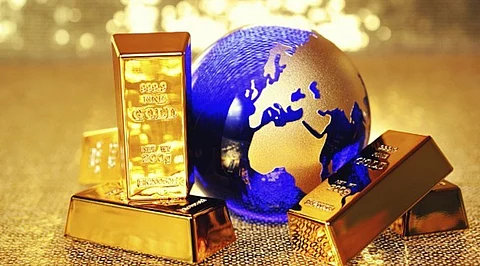

With the current economic climate posing some uncertainty, investors may want to examine how their assets are allocated, says Kevin DeMeritt, founder and chairman of precious metals firm Lear Capital.
According to a quantitative capital market outlook that brokerage company Charles Schwab published in January, some of the macroeconomic upsets that have occurred in recent years haven’t been fully reconciled yet.
Global conflicts, for instance, continue to be a concern. Institutional investors identified geopolitical bad actors’ impact as the top macroeconomic risk this year in a survey conducted by global asset management company Natixis Investment Managers.
While, following the Federal Reserve’s increases to the federal funds rate’s target range, inflation has lessened from its June 2022 9.1% peak, interest rates — which institutional investors say now pose the greatest portfolio risk — remain high.
Natixis’ survey also found more than half (51%) of institutional investors believe a recession is inevitable this year; 74% of them think it will be painful — or very painful.
A recent Bankrate survey revealed nearly two-thirds of Americans (63%) do not expect their personal financial situation to improve this year; 26% actually anticipate it will get worse. Ongoing inflation was the most commonly cited financial obstacle, followed by having a stagnant or reduced income.
However, more than a quarter of Americans, 27%, feel their financial situation will improve in 2024 — due to making more money from their savings or investment efforts.
Some of those efforts involve investing in stocks. More than half of Americans’ retirement savings, for instance, include a defined contribution plan like a 401(k), according to Federal Reserve research — and a study from the Employee Benefit Research Institute and the Investment Company Institute found 94% of 401(k) plan participants have at least some investment in equities.
Including other assets in your portfolio — such as physical precious metals — that have historically performed in a different way than stocks can help you proactively prepare for events that have the ability to drag the stock market down, according to Kevin DeMeritt.
That approach may prove particularly useful this year, given more than half (59%) of the institutional investors Natixis spoke with for its survey projected increased stock volatility in 2024 — and 39% said they foresee bond activity vacillations.
“Gold has an inverse relationship to stocks and other types of assets,” Kevin DeMeritt says. “In times of war or terrorism, [for example], usually you’re going to find the markets become extremely volatile. Nobody knows what’s going on, on a day-to-day basis. The volatility of gold is not going to be the same. It typically is going to give you more stability.
After Russia invaded Ukraine in 2022, travel and leisure, bank, and other stocks struggled — whereas gold, frequently considered to be a safe harbor investment, proved more popular, according to U.S. News & World Report. By December 2023, spot gold prices had reached a new high of more than $2,100 an ounce.
Forbes previously reported that gold has outperformed the S&P 500 index by an average of 37% during six of the last eight recessions. In the first year of the Great Recession, which took place between 2007 and 2009, gold rose in value by nearly 13%, according to the U.S. Bureau of Labor Statistics.
A Lear Capital analysis found premium precious metal coins, in particular, have retained value during all 15 of the recessions that have taken place in the U.S. since 1919.
In fact, between 1981 and 1989 — a time period that encompassed the end of a recession and the 1987 stock market crash — the CU 3000 Rare Coin index, a price performance guide compiled by appraisal and certification provider the Professional Coin Grading Service, actually rose 660%.
With a strong track record of retaining value, physical precious metals like gold may be able to help offset losses from other assets that occur because of economic downturns, international conflicts and other scenarios.
“Gold can be a great diversification tool,” Kevin DeMeritt says. “Gold is used to diversify during recessions, market volatility, and war. When investors are worried about the economy, usually you get more people turning to gold, which can drive up its price.”
The precious metal has, in fact, outperformed some major stock indexes in recent decades. From 2001 to 2021, gold prices, according to Lear Capital data, rose a whopping 566%; and silver grew in value by 377%. The S&P 500, on the other hand, increased by just 253%, and the Dow Jones Industrial Average was up 225% by 2021.
Unfortunately, sudden political and economic shifts can happen quickly, without much warning, Kevin DeMeritt says — and asset values can change in response.
“If [Russian President Vladimir] Putin today said, ‘Hey, I’m done; I’m going to pack up my war tools and go home,’ the markets might skyrocket,” the Lear Capital founder says. “Then again, if something like using nuclear weapons comes up, the market drops 500 to 1,000 points. What we’re seeing in Ukraine could happen in [another country]. You can’t predict those things. When they happen, it can have a devastating effect.”
Combining more historically volatile investments like stocks with physical precious metal assets might offer some fortification against the uncertainty market conditions can present.
“Diversification usually works out much, much better over the long term than a put-one-egg-in-your-basket-and-watch-it-closely mindset,” Kevin DeMeritt says. “It’s a great time to add at least some portion of a portfolio into that asset category.”
